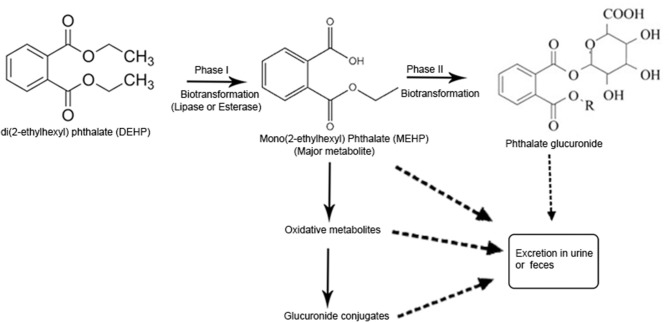Figure 2.
Pathway of phthalate metabolism in human body. LMW phthalates are mainly excreted in urine and feces as a monoester, no further metabolism is required. During phase I hydrolysis, diester phthalates are hydrolyzed by the enzymes like esterases and lipases in the intestine and parenchyma to their respective monoesters. High molecular weight (HMW) phthalates such as diisononyl phthalate (DINP), diisodecyl phthalate (DIDP), and dipropylheptyl phthalate (DPHP) have 9–13 carbon atoms in their chemical backbone and undergo further metabolism from monoesters via hydroxylation or oxidation and produce several oxidative metabolites which are excreted in urine within 24 h of exposure. Oxidative metabolites can also undergo phase II conjugation to form hydrophilic glucuronide conjugates which are excreted. Urinary phthalate metabolite is the most important biomarker for phthalate exposure [Adapted from the article, Metabolism of phthalates in humans by (Frederiksen et al., 2007)].

